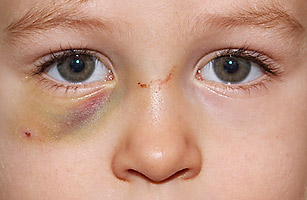
(2 of 3)
The concept of the menacing bully with problems at home is as established in the culture as it is in the research, but most people shy away from addressing the existing mental-health struggles of the bully's victim for fear of appearing to blame the more vulnerable party. But in viewing the victim as an actor in the relationship, educators and researchers may be able to provide him with the correct kind of support.
"Children who tend to gravitate to these [enemy] relationships repeatedly throughout their childhood are ones that warrant more attention and concern," says Maurissa Abecassis, an associate professor of social sciences and education at Colby-Sawyer College in New Hampshire who studies antipathetic and enemy relationships among schoolchildren — some of which can be classified as having bully-victim dynamics. But others are something else, something more common, often just two people who really don't like each other. "If you ask college students if they've ever had an enemy, roughly 70% will report they have — it's not such atypical behavior — but it's a little bit different for this other group."
Indeed, in an evaluation of 153 studies that looked at the psychological profiles of those reported by their teachers to be bullies, victims or bully-victims, Clayton Cook, an assistant professor of educational psychology at the University of Washington, and several of his colleagues found that all those groups were more likely to test poorly on measures of social competence, self-awareness and emotion regulation than were children who had nothing to do with bullying. In other words, they are opposite sides of the same coin — and they are all in trouble.
Meanwhile, an emerging area of psychological study is looking at the formation of enemies — the adversarial and antipathetic relationships that are prevalent in classrooms (and, most likely, in the faculty lounge too). The research shows that many of these relationships of mutual dislike indicate well-developed social skills, and yet they can look very much like bullying. The problem is that without a clear definition of what constitutes bullying, children who exhibit any type of unfriendly, negative or exclusionary behavior are punished as bullies. And the punishments are increasingly elaborate and severe as schools struggle to cope with the phenomenon.
"It's easy to take it a step further to think of dislike and bullying as the same, but they're not the same," says Melissa Witkow, an assistant professor of psychology at Willamette University and author of a landmark study that found an association between mutual antipathies and a higher level of social development. "As adults, there are people we don't like, but we're not beating them up. We're not harassing them. A lot of adults think that kids should only have positive relationships, but that's not possible."
As in the bullying-depression connection, this antipathy-sociability association contains a paradox: Are children with more highly developed social skills more likely to have the healthy kind of adversarial relationships? Or does having such a relationship help foster more sophisticated social maneuvering? Witkow suspects the former. In her 2009 study of over 2,000 sixth-graders in 99 classrooms at 11 middle schools throughout the Los Angeles area, Witkow found that pairs of children who reported disliking each other's company on surveys (they were asked to list people they didn't like to spend time with) were more likely to be rated as well-liked by their peers than were children for whom dislike was only one-sided. And teachers of mutually antipathetic students scored them higher on measures of social development and classroom behaviors like impulse control.